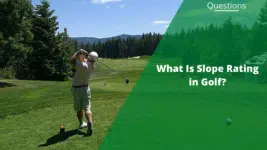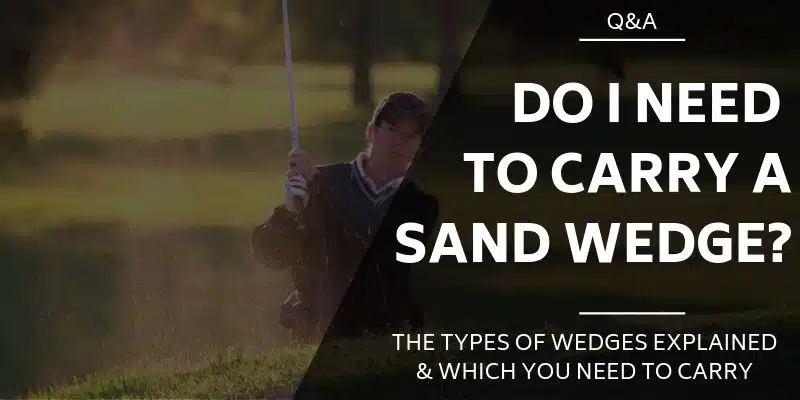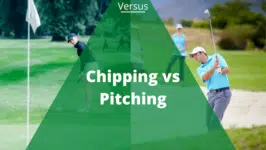Controlling the shape of your golf shots will make the game much more enjoyable. It will enable you to ride the wind or hold the ball up against the wind, dependent on what you want to achieve.
It is nigh impossible to hit every shot straight. There will be some degree of curvature in every shot. Even if it lands in line with the position on the tee.
To successfully shape your shots, you will need a neutral swing path.
Fading the golf ball is a variation of hitting the dreaded slice that ends up in big trouble. However, unlike a slice, the fade does not rob you of distance and power. Tweaking your swing and alignment slightly will move the result from a slice to a controlled fade.
A fade starts off to your weaker side, (left edge of the fairway for right-handed golfers) and then slowly turns back towards the fairway. It does not curve as much to the right as a slice.
A fade, unlike a slice, turn between 3 to 10 yards. Not the unsightly curve that a slice produces.
How Do I Hit a Fade?
With the development of launch monitors, more detail could be collected about the swing and the trajectory of the ball after impact.
This has led to the redefinition of the laws of the ball.
Initially, it was believed that your swing path played the most significant role in the trajectory of the ball.
According to the latest information available, the clubface dictates the initial direction of between 75% and 95% of shots, not the swing path. However, the swing path still dictates the curvature and not the clubface.
The basis of a fade lies in the clubface being slightly open during the impact zone.
You could argue that an open clubface is a major cause of hitting a slice. And you would be correct.
However, we are not talking that far open.
A good guideline is to present your clubhead closed to the target line, but open to the body line.
Ball Position
Your clubhead travels on an arc around your body through the hitting zone. It starts on an inside-out swing path and ends with an outside-in swing path.
By moving the ball forward by the width of one golf ball in your stance, you increase the chance of creating an impact on the outside-in swing path. That provides sufficient time during your downswing to get the face open to the path.
Placing the ball farther back in your stance will promote impact earlier in the swing leading to either a straight shot or a draw.
Tee Height
The driver swing path requires the ball to be teed up to the height that you require to make contact during the upward phase of your swing. This enables you to hit a high flying straight drive or a high draw.
Hitting a driver off the deck is sure to end up in a fade thus a lower tee position will aid you in your quest for a fade.
To hit the fade, tee it low. The equator of the golf ball should be level, or even a tad lower, than the top of the driver’s head.
Teeing the ball lower brings your starting lines in and generates impact a fraction of a second earlier.
Alignment
To hit a fade, you have to open your stance. Start by aiming your feet, hips, and shoulder farther to the side that you are intending to hit the ball, left for right-handed golfers.
At this stage, the clubface will be open.
The angle of the clubface will determine the amount of fade that you will be able to generate.
Swing
There is no change required to your normal swing. Trust the mechanics of your swing. You do not have to create an outside-in swing path.
The feeling of the takeaway and backswing is the same as trying to hit a normal straight ball.
No need to adjust your tempo or rhythm. It is the same swing with a slightly different path as a result of your body pointing outward. Changing your tempo and rhythm will be disruptive and cause a weak swing.
The way you want to feel at the top is that you have all the time in the world.
The body alignment will adjust the swing path, and the open clubface will do the rest to impart the sidespin required for a fade.
Avoid creating an over-the-top downswing by starting with your hands as opposed to your lower body. This will turn your fade into an ugly slice.
Use your big muscles in your legs, hips, and upper body to move in unison to create a compact and connected swing. Don’t do anything with your hands.
You Can Still Bomb a Fade?
Every professional golfer and low handicap golfer must be able to shape their shots. To reduce your score and enjoyment of the game, you must learn to do the same.
But can I still hit a fade as far as a draw? I hear you ask.
Theoretically, if the launch angle, ball speed, and spin rate are the same, a fade would carry the same distance as a draw. That’s in theory. The research found that in practice a draw will usually outdistance a fade.
You may lose some distance (5 -10 yards) when hitting a fade.
A draw place more of a topspin effect on the ball causing it to roll out farther, perhaps out of fairway if the contact is too pure.
The fade creates more backspin resulting in a higher trajectory on the ball. The combination of a higher trajectory and backspin will cause the ball to land more softly and settle promptly resulting in less rollout
Please watch this YouTube video for more information on how to hit a power fade.
Final Thoughts
Many golfers aspire to have a draw as their dominant shape as they were taught that good golfers draw the ball.
However, many professionals now prefer to hit a power fade allowing them to control the flight of the golf ball in windy conditions and to avoid too much rollout.
To increase your all-around ability and become a better player you must learn how to shape your shots at will depending on the circumstances you face.
Ultimately you must decide whether a draw or a fade suits our swing type and game best and which you can exercise the most control over.
Practice makes perfect, experiment with a variety of angles at address and with your clubface to determine the amount of fade that you will get from the various combinations.
Related Articles
- How To Hit A Draw; Tips To Achieve The Sought-After Manoeuvre
- How to Increase Clubhead Speed (And Hit The Ball Further Than Your Mates)
- How to Put Backspin on a Golf Ball: Golf Instruction
Nick is the founder of GolfSpan and an avid golfer. He's not quite a pro but has over 15 years of experience playing and coaching golfers worldwide. His mission is to bring the golfing community a better experience when it comes to choosing the right golf gear and finding the right setup for your game.






